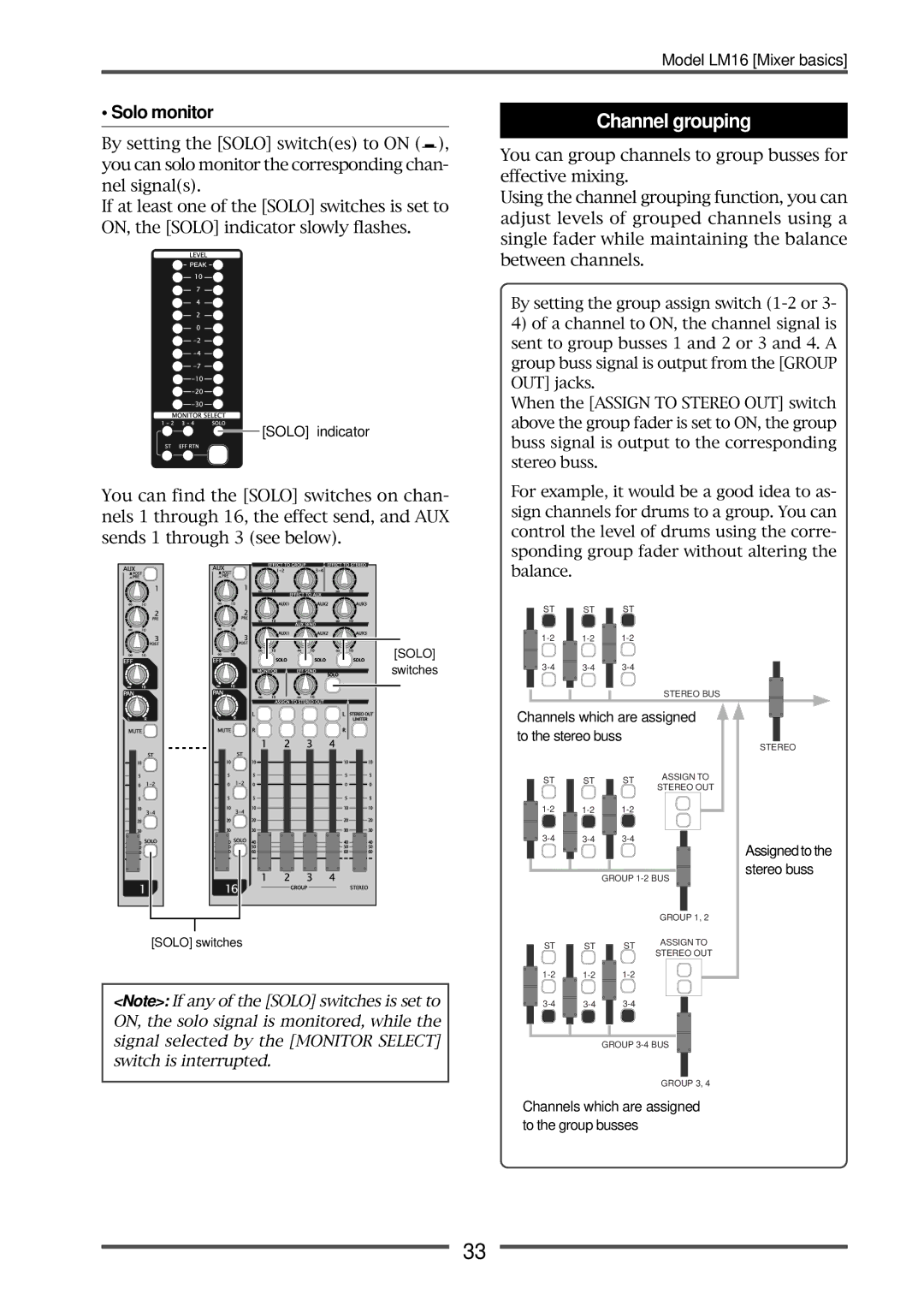
Model LM16 [Mixer basics]
• Solo monitor
By setting the [SOLO] switch(es) to ON (![]() ), you can solo monitor the corresponding chan- nel signal(s).
), you can solo monitor the corresponding chan- nel signal(s).
If at least one of the [SOLO] switches is set to ON, the [SOLO] indicator slowly flashes.
![]() [SOLO] indicator
[SOLO] indicator
Channel grouping
You can group channels to group busses for effective mixing.
Using the channel grouping function, you can adjust levels of grouped channels using a single fader while maintaining the balance between channels.
By setting the group assign switch
4)of a channel to ON, the channel signal is sent to group busses 1 and 2 or 3 and 4. A group buss signal is output from the [GROUP OUT] jacks.
When the [ASSIGN TO STEREO OUT] switch above the group fader is set to ON, the group buss signal is output to the corresponding stereo buss.
You can find the [SOLO] switches on chan- nels 1 through 16, the effect send, and AUX sends 1 through 3 (see below).
For example, it would be a good idea to as- sign channels for drums to a group. You can control the level of drums using the corre- sponding group fader without altering the balance.
[SOLO]
switches
ST
ST
ST
STEREO BUS
Channels which are assigned | ||||
to the stereo buss |
| |||
ST | ST | ST | ASSIGN TO | |
STEREO OUT | ||||
|
|
| ||
| ||||
| ||||
|
| GROUP | ||
STEREO
Assigned to the stereo buss
[SOLO] switches
<Note>: If any of the [SOLO] switches is set to ON, the solo signal is monitored, while the signal selected by the [MONITOR SELECT] switch is interrupted.
|
|
| GROUP 1, 2 | |
ST | ST | ST | ASSIGN TO | |
STEREO OUT | ||||
|
|
| ||
| ||||
| ||||
|
| GROUP | ||
GROUP 3, 4
Channels which are assigned to the group busses
33
